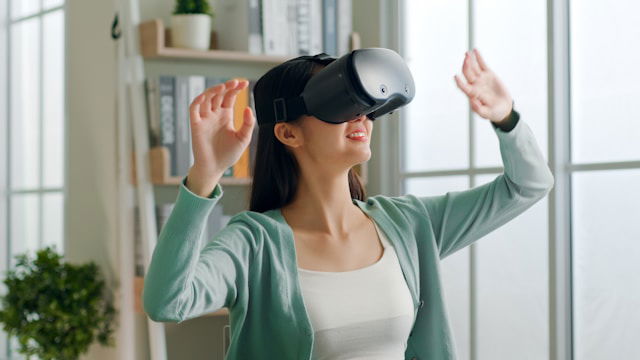
Virtual reality (VR) can be a game-changing tool for certain situations — like practicing open heart surgery or training airline pilots — but it’s not a perfect solution for everything.
That’s the main conclusion of a review of experimental research on VR, published in the journal Nature Human Behavior by researchers led by Jeremy Bailenson, director of Stanford’s Virtual Human Interaction Lab.
Bailenson explains that VR is best when used selectively. It’s an intense medium that blocks out the real world, and overuse can lead to discomfort or ‘simulator sickness,’ a form of motion sickness.
While big tech companies like Meta and Apple have poured billions into VR, betting on its mass adoption, the research suggests it should be reserved for short, specific uses — often just minutes at a time — and for experiences that fit into what the team calls the ‘DICE’ framework: dangerous, impossible, counterproductive, or expensive to do in real life.
The review identifies five key areas where VR shines — and where it falls short:
First, VR is excellent for taking people to dramatic or personally challenging locations. Walking through ancient ruins like Pompeii or exploring the Grand Canyon offers a sense of presence that’s hard to replicate.
It’s even used in exposure therapy, where facing fears in VR has led to long-term symptom relief, such as in fear-of-flying patients. But VR loses its appeal for routine activities, like standard work meetings. If you’re just sitting still, a regular video call works better.
Second, VR is valuable for learning hands-on, procedural skills, such as surgery or public speaking, where immersion and step-by-step practice help. However, it’s not particularly helpful for abstract learning like solving math problems, which can be taught just as well on a chalkboard or computer.
Third, VR allows people to try on new identities through avatars, and these choices affect real behavior. Taller avatars can make users more assertive, while athletic avatars can encourage more movement. But the reverse is also true, so users should choose avatars thoughtfully to match their real or ideal selves.
Fourth, VR works well for fitness and certain sports training, but it struggles with precision movements that require exact measurements, like throwing a baseball. The technology still has issues with accurately judging distances, so it’s less reliable for centimeter-level accuracy.
Finally, VR offers movement tracking that makes experiences immersive, but that also means there’s no real anonymity. The way people move is unique and can be used to identify them, even if their avatar looks completely different.
This research reinforces the idea that VR is a powerful but limited tool. It’s most effective when used for short, immersive experiences that are otherwise hard or impossible to replicate, and where the physicality of movement enhances learning or engagement.
Overuse, or using VR for tasks better suited to simpler media, can lead to wasted resources and even physical discomfort. As VR technology evolves, its biggest value may come not from replacing everyday interactions, but from making rare, high-impact experiences more accessible.
If you care about mental health, please read studies about One sleepless night can reverse depression for days and findings of Scientists find better treatment for older adults with depression.
For more information about mental health, please read studies about Frequent painkiller use linked to mental health risks in these people and findings of Common depression drugs may offer new treatment for bipolar disorder.
The study is published in Nature Human Behaviour.
Copyright © 2025 Knowridge Science Report. All rights reserved.



